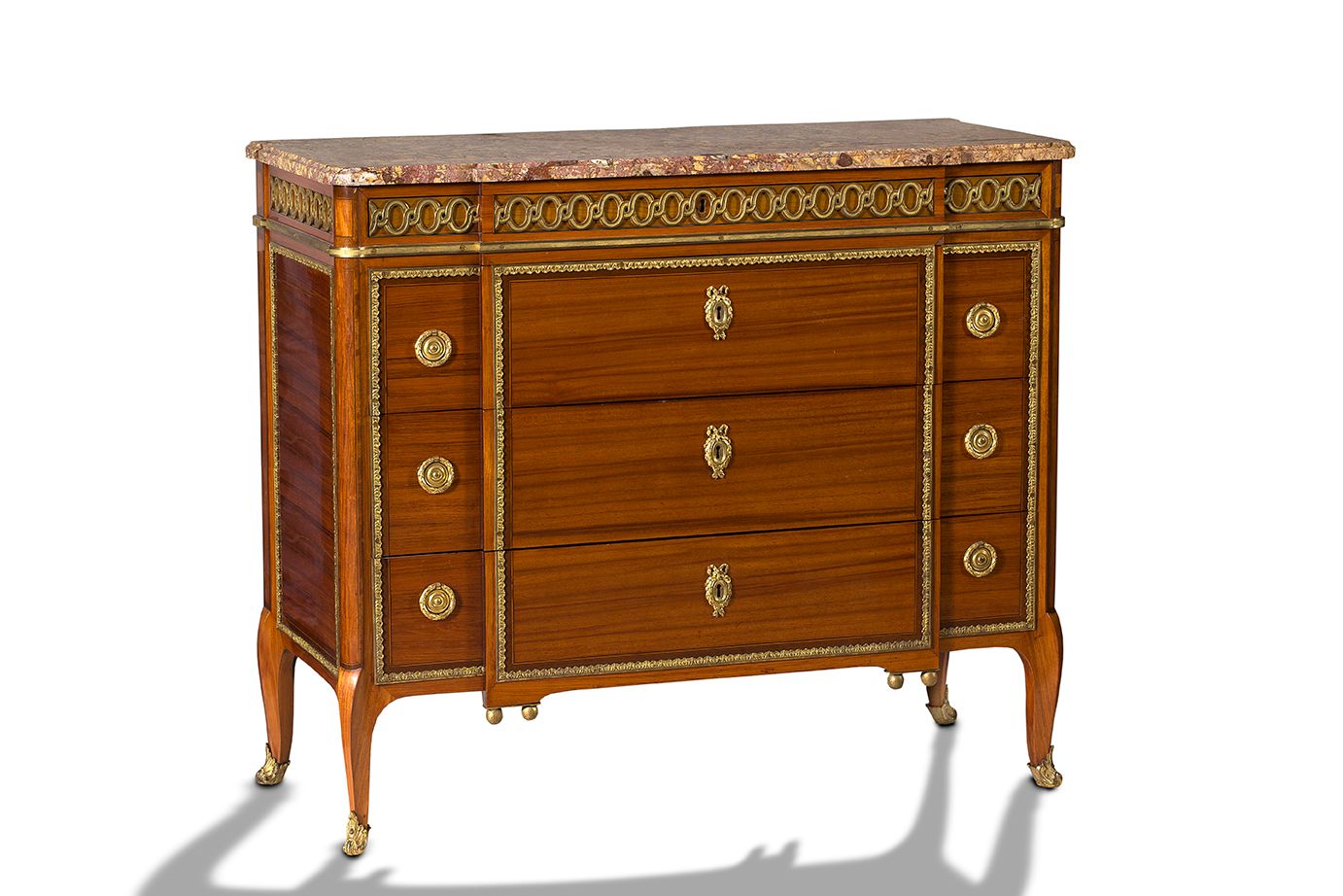Description
MARTIN CARLIN (CA. 1730-1785)
Important chest of drawers veneered with ribboned satinwood in amaranth frames underlined by compound fillets; rectangular in shape, the front opens with four drawers, three of them without a crosspiece; the upper drawer hidden in a frieze of interlacing; rounded uprights; cambered legs in knife blades; beautiful ornamentation of chased and gilt bronze such as amaranth mouldings, water-leafed frames, laurel rings, macaroons, lock entrances, a double sphere and sabots. Stamped by Martin Carlin and JME. Transitional period Louis XV-Louis XVI. Pyrenean brocatel marble top (cracked, restored) (Small lacks and cracks in the veneer, restorations, small deformation to a bronze) H. 91, W. 106, D. 44 cm The work of Martin Carlin differs from that of most of his Parisian colleagues of the time, in particular because of the special attention the craftsman paid to the assembly and mounting of his furniture, which enabled them to survive the centuries in a quite exceptional state of preservation. In the field of chests of drawers, Carlin showed a rare inventiveness as well in the compositions, as in the refined materials with which he decorated his frames, characteristics which are revealing of the strong commercial relations which he maintained with the greatest merchants-merchants of the time, particularly with Simon-Philippe Poirier, Darnault fils and Dominique Daguerre which provided him with the plates of porcelain, panels of lacquer of China or Japan necessary to his luxurious achievements. In parallel to these creations intended for the most fortunate amateurs, the cabinetmaker declined his models by veneering them with panels, either in more or less elaborate marquetry such as those known as "herringbone", "quartefoil" or "herringbone", or in plain veneer, as can be seen on the piece of furniture we are proposing, which favours the purity of the lines of the piece of furniture and enhances the meticulously selected wood leaves. Let us also note an ornamental detail which appears as one of the true signatures of the craftsman: the balls, or drops, which underline and give rhythm to the cut of the lower part; these same decorative elements in bronze appear on some other rare pieces of furniture of the cabinetmaker, let us quote: a chest of drawers sold at Sotheby's, New York, on 13 October 1973, lot 153; and a flat desk with Japanese lacquer panels, from the collections of Mesdames at the Château de Bellevue, which belongs to the collections of the Louvre Museum in Paris (reproduced in D. Alcouffe, A. Dion-Tenenbaum and A. Lefébure, Le mobilier du Musée du Louvre, Tome 1, XVIIe-XVIIIe siècles, Éditions Faton, Dijon, 1993, p.261, catalogue n°84); finally, let us mention a desk with porcelain plates from Sèvres, acquired in Paris in 1782 by the Grand Duchess Maria Feodorovna of Russia, which is exhibited in the Getty Museum in Malibu (illustrated in G. Wilson and C. Hess, Summary Catalogue of European Decorative Arts in the J. Paul Getty Museum, 2001, p.42, catalogue n°75).
You may also like
